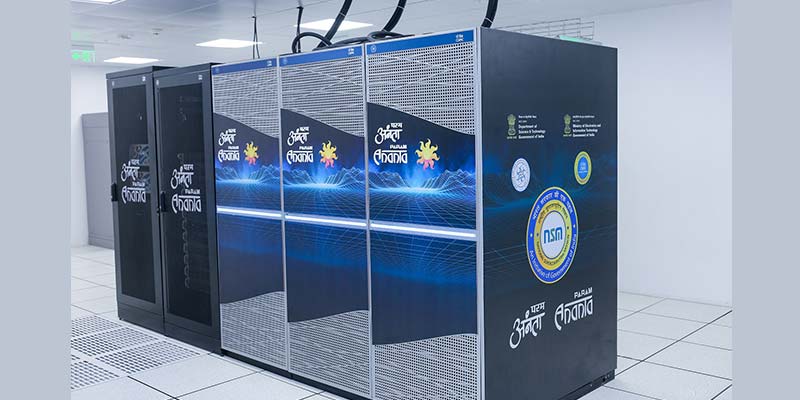- India
- May 31
IIT Gandhinagar commissions Param Ananta supercomputer
• The government has deployed an indigenously developed Param Ananta supercomputer with 838 TeraFlops computing power capacity at IIT Gandhinagar.
• Param Ananta was commissioned under National Supercomputing Mission (NSM) — a joint initiative of ministry of electronics and information technology (MeitY) and Department of Science and Technology (DST).
• A memorandum of understanding was signed between IIT Gandhinagar and the Centre for Development in Advanced Computing (C-DAC) on October 12, 2020, to establish this 838 TeraFlops Supercomputing Facility under NSM.
Features of Param Ananta
• The Param Ananta Supercomputing Facility will be able to support IIT Gandhinagar in pursuing research and development activities in multidisciplinary domains of science and technology at the Institute, including, but not limited to, artificial intelligence (AI), machine learning (ML), and data science, computational fluid dynamics (CFD), bio-engineering for genome sequencing and DNA studies, computational biology and bioinformatics used in prediction and detection of gene networks etc.
• It can help atomic and molecular sciences to comprehend the binding of drugs to a particular protein.
• Multiple applications from various scientific domains such as weather and climate, bioinformatics, computational chemistry, molecular dynamics, material sciences, computational fluid dynamics, etc have been installed on the system for the benefit of researchers. This high-end computing system will be a great value addition for the research community.
• The ministry said that 60 per cent of the Param Ananta capacity will be used by IIT Gandhinagar and the rest will be open for use by nearby academic institutes for various research purposes.
National Supercomputing Mission (NSM)
• In 2015, the Cabinet Committee on Economic Affairs approved the launch of the National Supercomputing Mission (NSM) at an estimated cost of Rs 4,500 crore over a period of seven years.
• The Mission envisages empowering our national academic and R&D institutions by installing a vast supercomputing grid comprising more than 70 high-performance computing facilities. These supercomputers will also be networked on the national supercomputing grid over the National Knowledge Network (NKN).
• The NKN is another programme of the government which connects academic institutions and R&D labs over a high speed network.
• Academic and R&D institutions as well as key user departments/ministries would participate by using these facilities and develop applications of national relevance.
• The Mission is being jointly steered by the department of science and technology (DST) and the ministry of electronics and information technology (MeitY) and implemented by the Centre for Development of Advanced Computing (C-DAC), Pune, and the Indian Institute of Science (IISc), Bengaluru.
• NSM was set up to provide the country with supercomputing infrastructure to meet the increasing computational demands of academia, researchers, MSMEs, and startups by creating the capability design, manufacturing, of supercomputers indigenously in India.
• The Mission implementation would bring supercomputing within the reach of the large scientific and technology community in the country and enable the country with a capacity of solving multi-disciplinary grand challenge problems.
Objectives of NSM:
1) To make India one of the world leaders in supercomputing and to enhance India’s capability in solving grand challenge problems of national and global relevance.
2) To empower our scientists and researchers with state-of-the-art supercomputing facilities and enable them to carry out cutting-edge research in their respective domains.
3) To minimise redundancies and duplication of efforts, and optimise investments in supercomputing.
4) To attain global competitiveness and ensure self-reliance in the strategic area of supercomputing technology.
Manorama Yearbook app is now available on Google Play Store and iOS App Store

